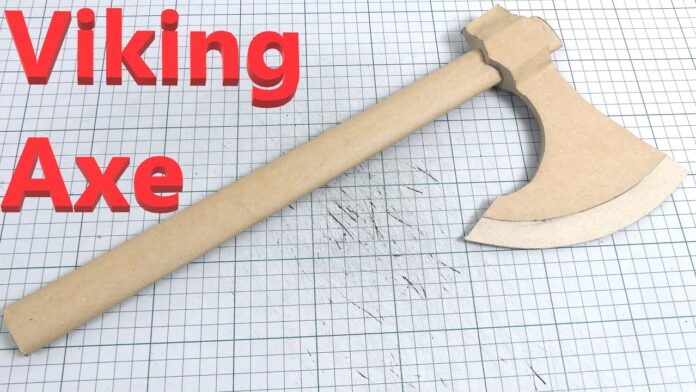For centuries, the Viking axe has been used to make an impression – both literally and figuratively. From its humble beginnings as a tool used by Norse warriors to the modern day, the Viking axe is renowned for its strength and sturdiness. In this article, we’ll explore the history, origin, and functional uses of the Viking axe so you can make an informed decision on whether or not it should be a part of your collection.
History of Viking Axes
Viking axes have a long and distinguished history. They were used by Viking warriors to great effect in their many battles, and were renowned for their reliability, strength and effectiveness. Early viking axe for sale were designed for cutting apart opponents’ shields and armor, as well as for hacking through wood and other materials.
Vikings were highly skilled in axe-crafting, and their axes were crafted from steel, iron, and other metals. These axes featured short shafts and broad heads, typically with a rounded shape. Later axes featured longer shafts and more sophisticated blade designs, along with decorative carvings and intricate designs.
Today, Viking axes are still an important part of Scandinavian culture, and can be found in museums and collections around the world. Most reproductions are made with steel or carbon steel blades, and feature handles made of ash, maple, or hickory. Some replicas also feature elaborately carved handles or bronze accents.
Viking axes make a great addition to any collection, whether you’re a history buff or a casual collector. Not only are they aesthetically pleasing, but they serve as reminders of the strength and bravery of the Vikings and their battles.
Origin of Viking Axes
Viking axes have a long and storied history, dating back to the 8th century. The earliest signs of the axe’s use can be found in the Scandinavian countries of Norway, Denmark, and Sweden, where Vikings used them for both warfare and everyday life. While the axe was initially used as a weapon, it eventually became an essential tool for everyday tasks around the home or on the farm.
Viking axes are unique in that they were designed with two different blades. The first blade, called the “long seax”, was larger and heavier, usually measuring between 12-24 inches long. This blade was both thick and strong, designed to be used in combat or to hunt large animals. The second blade, the “short seax”, was designed for more precise tasks such as carving or carpentry. It was usually much shorter, measuring between 4-6 inches in length.
The axes were designed to be both functional and practical, thus they were made with a variety of different materials such as iron, bronze, and even wood. The handles were usually made of wood, ensuring that the axe could be gripped firmly and comfortably, while the blades were typically fashioned from iron, which was strong and resistant to wear and tear.
In addition to their practical design, Viking axes also had a striking visual impact. The long seax featured a blade that curved up at the top, giving it an intimidating and imposing appearance. This was further enhanced by intricate decoration and ornamentation, often featuring stylized animals, which were believed to bring good luck to the user.
Viking axes have seen a resurgence in popularity in recent years, with many modern day craftsmen still producing them using traditional methods and materials. This is largely due to their timeless design and functional utility, ensuring that the axe will remain a vital part of history for many centuries to come.
Functional Use of Viking Axes
Viking axes have been part of Scandinavian culture since the 9th century, and they were used for a variety of functional purposes as well as being a symbol of strength. In the hands of a skilled Viking warrior, the axe was a formidable weapon and could be used to cleave shields and armor, or to fight in a close-quarters melee.
Due to their versatility and performance, Viking axes were also used for utilitarian purposes, such as chopping wood or taking down trees. The design of the axe was such that it was able to use its weight to full effect and provided a fast, powerful, and efficient means of shaping, cutting, and splitting wood. Additionally, the curved blade of a Viking axe lent itself to both cutting and splitting, giving it an edge over other axes, offering better control and accuracy when performing tasks.
Viking axes, due to their design, tended to be quite heavy, offering excellent momentum and penetration when used in combat. In addition, the curved blade provided excellent control when wielded by an experienced warrior, allowing them to effectively parry and block the strikes of their opponents.
Outside of its use as a weapon and utilitarian tool, the Viking axe was also used to create other objects and artifacts, such as jewelry and medieval sword for sale. The shape of the axe was ideal for creating intricate patterns and shapes in wood, making it ideal for creating works of art. It was also useful for producing decorative items such as carved bowls and mugs, as well as other crafted items.
In conclusion, Viking axes were a versatile tool, both in combat and in more utilitarian tasks. From a functional standpoint, it provided both cutting and splitting power, making it ideal for chopping wood, taking down trees, and producing detailed carvings. In addition to its functional capability, it was also a symbol of strength and power, and the designs of the blades often served as artistic inspiration for carvings in wood and other objects.







